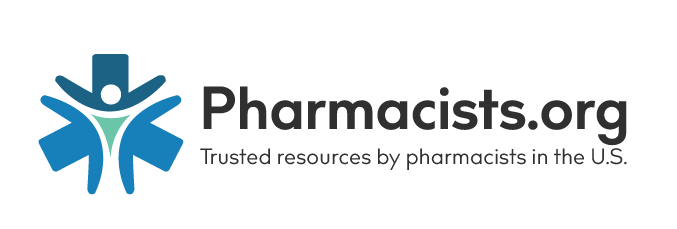Key Points
- The most common ways of being paid as a freelance medical writer are per hour, per word, and per project.
- For those with a doctoral degree, like an MD, PharmD, or PhD, typical rates run from $50 per hour to $150 per hour. Per word rates start at around $0.20 and can be as high as $1 or more.
- Per project rates vary widely, depending on the project. Entry level, full-time medical writing jobs typically start at $80,000-90,000 per year.
This is just one lesson out of 4.5 hours of medical writing instruction you will get in Medical Writing for Healthcare Professionals.
People wanting to get into medical writing often wonder how much a medical writer can make. While of course there’s not a straightforward answer to it I wanted to give you an idea of the rates I have seen.
How am I paid?
Clients usually pay one of these ways:
- Per hour
- Per word
- Per project
Per-word and per-project rates are why it’s important to be efficient! If you can produce a great article in less time you get paid more per hour.
Out of these three, paying per project seems to be the most common.
However, we’ll go through each of these to get an idea of rates.
Per hour rates
Per-hour pay varies widely, primarily because the definition of ‘medical writer’ varies widely by employer, role type, etc. However, on the low end (i.e. no clinical background, Bachelor’s Degree in English, +/- Master’s Degree) around $30-40/hour is common.
On the high end (i.e. MD, PharmD, or PhD, plus years of experience in a high-demand area like regulatory writing or managing medical communications projects), I’ve seen $150/hour or more.
In the middle is the majority of writers. If you have a clinical background (MD, PharmD, RN, etc.), I think it’s reasonable to expect at least $50/hour or more.
For me, I’m willing to take a lower rate if it’s a new area of writing I haven’t done before. That’s because by building experience in that area I can expand my client base later on and become a more well-versed writer. I also feel like it’s fair because a lower rate will make up for the fact it will take me longer to write in a new area than a writer who is very experienced in that area.
Writing I have done a lot of (in my case, consumer health, CE, trade journals, and provider education) I ask more for.
Per word rates
I’ve only had a handful of clients pay per word, but it does happen.
For writing work, I’ve been paid 20 cents per word on the low end (for trade journals, for example) and up to $1 per word on the high end (provider education that requires interviewing physicians and a full reference list at the end).
I’ve also done some editing, mainly for companies that translate scientific papers for publication in English peer-reviewed journals. This job requires editing a translator, who is a native speaker of the source language but not of English. These rates I’ve seen as low as 2 cents per word (I didn’t personally take that job) and up to around 5.5 cents per word.
While this sounds low, I found that even 4-5 cents per word still works out to close to $45-50 per hour. Keep in mind, you aren’t actually writing the work! A big unknown that could kill your hourly rate is the quality of the translation.
I was fortunate to work with an amazing translator where I was just touching up the piece, but if they aren’t as fluent in English you could be stuck correcting a lot of very basic passages.
Per project rates
This one also varies widely, but again I’ll attempt to answer it. Perhaps the easiest way to answer this question is to break it up into the types of jobs I’ve done.
Writing for the web
I’m including trade journals, consumer health, blogs, etc. in this category. The ‘standard’ length web post runs 600-800 words, though I’ve also done some as slide shows.
For these, I’ve been paid on a per-project basis anywhere from about $200-500.
Continuing education
Writing CE usually takes quite a bit of time, so the pay comes along with that. For a one-hour CE, I personally wouldn’t consider anything less than $500, and I think $750-1000 is a fair amount to expect. Keep in mind, a one-hour CE can take 10 hours + to produce, depending on the type of CE, your familiarity with the topic, and how efficient you are at writing it.
Presentations
I include webinars and live presentations in the category of ‘medical writing,’ because putting them together is very similar to writing a piece. The only difference is that you’re presenting it. Just like continuing education, I would consider $750-1000 to be fair for a one-hour presentation.
Full-time medical writing jobs
Entry level jobs seem to most often be offering around $80,000-90,000 (in the US) at medical communications firms, but you might be able to get more going after continuing education providers and other pages dedicated to provider and healthcare professional education.
These sites need healthcare professionals and know their rates need to be competitive with clinical practice in order to get experienced clinician contributors, so in my experience they often come with higher rates.
More experienced writers, who get promoted to Senior Medical Writer, Associate Director, etc. can command higher rates. I recently even saw one (in the world of regulatory writing, but it was in writing) offering $250,000 per year.
AMWA salary survey
The American Medical Writer’s Association also conducts a salary survey on occasion. You can find their 2019 survey infographic here, which is loaded with tons of good information!
One final note about pay
Regardless of how much the client pays you, it is critical that you do your best work if you agree to do it. In other words, you shouldn’t provide a more polished piece to a higher-paying client than you would a lower-paying client. Remember, your name is on the line!
Just like any other business, consistently excellent service will get you more clients and eventually higher rates.
I am a pharmacist, community pharmacy consultant, and medical writer with over 12 years of clinical practice experience in community, outpatient health system, long term care, and academic settings. I am also the founder of PharmCompliance.com, a website dedicated to the success of community pharmacy.
As a pharmacy project manager, I led the implementation of new service lines, assist with ensuring legal and third-party compliance for over 70 retail stores, lead quality improvement and medication safety initiatives, write policies, procedures, and best practices for all our retail sites, and help with optimizing revenue cycle and pharmacy profitability. I have been responsible for DMEPOS and vaccine accreditation through CMS, obtaining new licenses and permits, and implementing a prescription drug kiosk embedded in our physician offices.
As a medical writer, my work has been featured in GoodRx, Pharmacy Times, Drug Topics, Patient Care Online, and in peer-reviewed journals. I have also given presentations on a range of topics, from disease state pharmacotherapy for medical residents to updates on the CDC vaccine storage and handling guidelines for a medical-grade refrigerator and freezer manufacturer. I have written and presented continuing education for CEImpact, FreeCE, AchieveCE, Ascension Health, and the Florida Department of Health.








